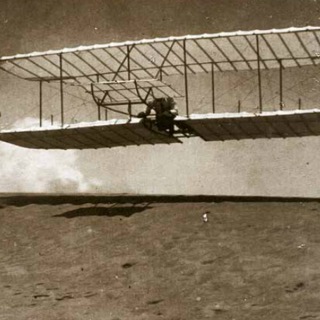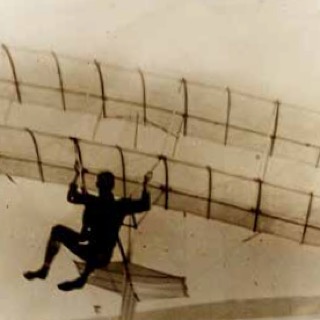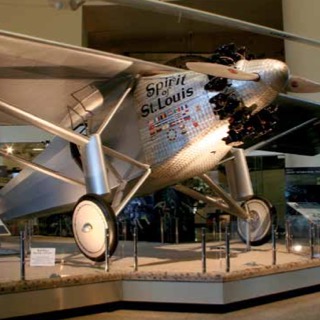
The second of the Wright Brothers' series of gliders was made in 1901 and was an enlarged version of their 1900 glider, with its design based heavily on the research notes of early aeronautical pioneer Otto Lilienthal.

Octave Chanute was a successful engineer who undertook the invention of airplanes later in his life as a hobby, after being inspired by Otto Lilienthal. In 1894, he published Progress in Flying Machines, which gathered and analyzed all the technical knowledge about aviation accomplishments and included all the world's aviation pioneers.

The BQM-34F was a jet powered, supersonic, remote-controlled recoverable aerial target vehicle built by Teledyne Ryan Aeronautical Company of San Diego for the United States Air Force. Similar versions, designated BQM-34E, and 34T, were used by the U.S. Navy. The first flight was in June 1972, and the Firebee II remained in service until 1990.

One of the most advanced unmanned aerial vehicles (UAV) in the world, the Predator was designed to provide the U.S. Air Force an airborne tactical reconnaissance platform. The Predator is actually more a system than just an airframe; it is comprised of four aircraft, a ground control station, a satellite communications terminal, and 55 personnel. In flight, the aircraft is controlled by a ground crew with a direct data link or, when beyond range of the direct link, by satellite.

When Charles A. Lindbergh and his Ryan monoplane, the Spirit of St. Louis, touched down at Le Bourget Field at 10 p.m. on May 21, 1927, both man and machine made history. This first non-stop New York-to-Paris flight was completed in 33 hours, 30 minutes in a plane designed, built and tested in San Diego. The flight was inspired by the $25,000 Orteig Prize for the first non-stop flight between New York and Paris. Lindbergh received the prize and the acclamation of nations around the world.
2001 Pan American Plaza, San Diego, CA
Phone: 619.234.8291
Información En Español
Contact Us
We would like to thank all our sponsors who help us make a difference. Click here to view all who help us.

The San Diego Air & Space Museum is a 501(c)(3) non-profit organization. Federal Tax ID Number 95-2253027.